Seleucide Empire’s Fall
AED 2,496
Seleucid empire, (312–64 BCE), an ancient empire that at its greatest extent stretched from Thrace in Europe to the border of India. It was carved out of the remains of Alexander the Great’s Macedonian empire by its founder, Seleucus I Nicator.
The Seleucid empire began losing control over large territories in the 3rd century BCE. An inexorable decline followed the first defeat of the Seleucids by the Romans in 190. By that time the Aegean Greek cities had thrown off the Seleucid yoke, Cappadocia and Attalid Pergamum had achieved independence, and other territories had been lost to the Celts and to Pontus and Bythnia.
By the middle of the 3rd century, Parthia, Bactria, and Sogdiana had gained their independence; the conquest of Coele Syria (Lebanon) and Palestine by Antiochus III (200) and a brief occupation of Armenia made up to some extent for the loss of much of Anatolia to the Romans.
The decline accelerated after the death of Antiochus IV (164) with the loss of Commagene in Syria and of Judea in Palestine. By 141 all lands east of the Euphrates were gone, and attempts by Demetrius II (141) and Antiochus VII (130) could not halt the rapid disintegration of the empire. When it was finally conquered by the Romans in 64 BCE, the formerly mighty Seleucid empire was confined to the provinces of Syria and eastern Cilicia, and even those were under tenuous control.
In stock
Description
- Silver Tetradrachm from the Seleucid Empire.
- Housed in wooden box with insert telling details of the coin.
- Coins will range from Very Fine to Extra Fine condition.
- Obverse: King Philip I right.
- Reverse: Zeus seated left holding Nike.
Additional information
| Brand | Seleucid Empire's Fall |
|---|

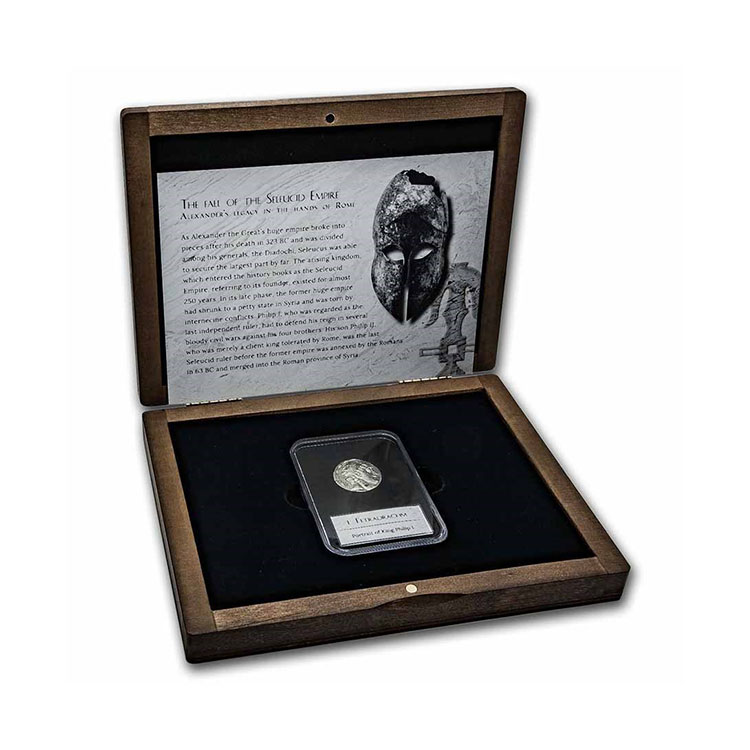

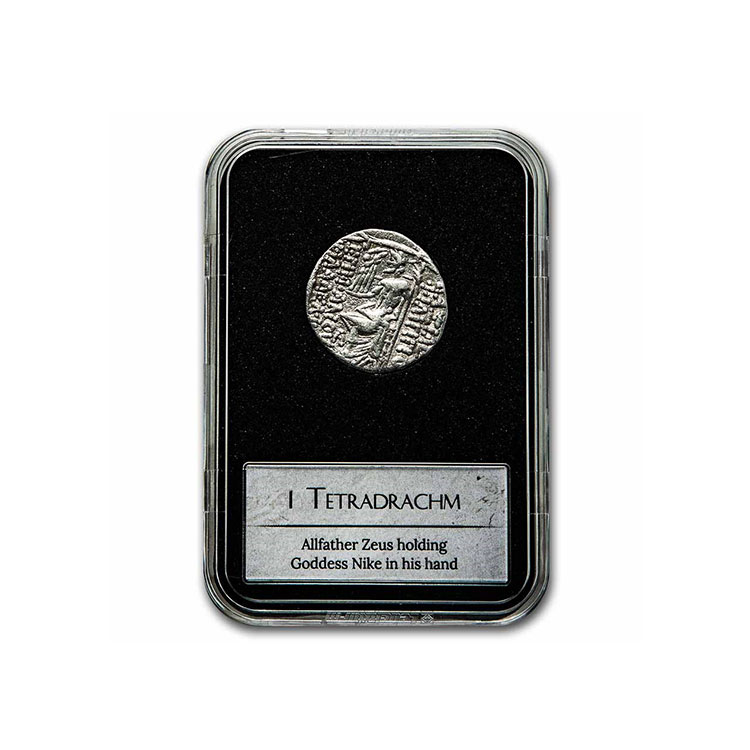
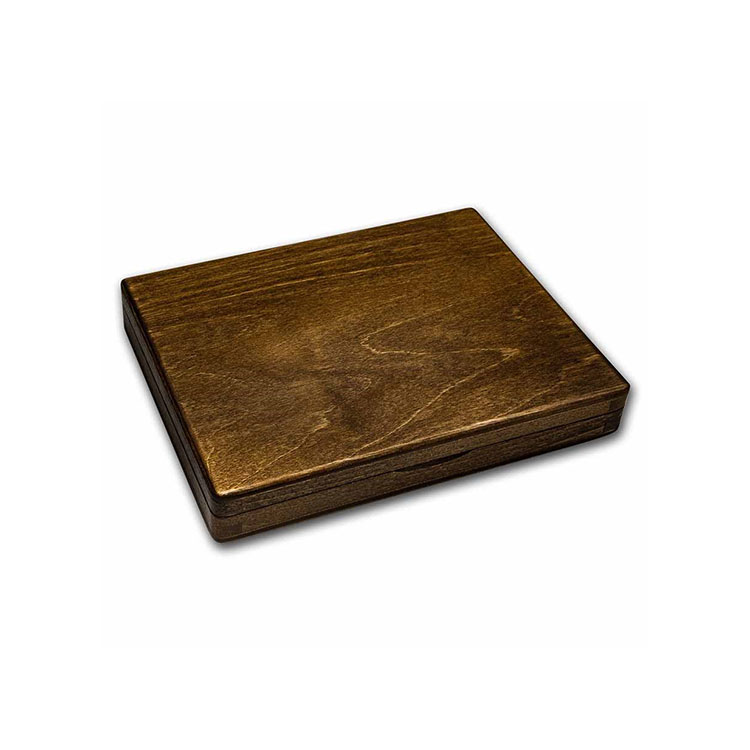
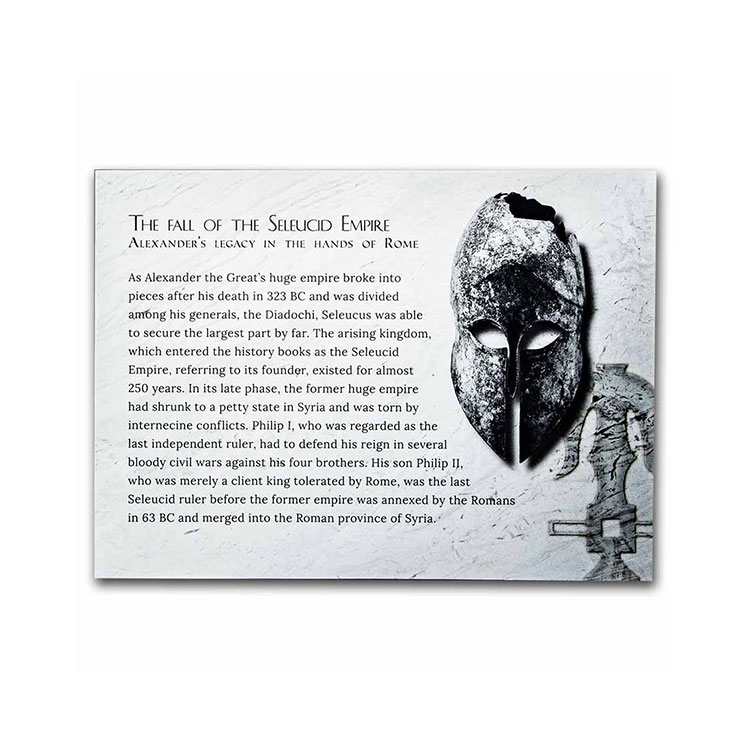
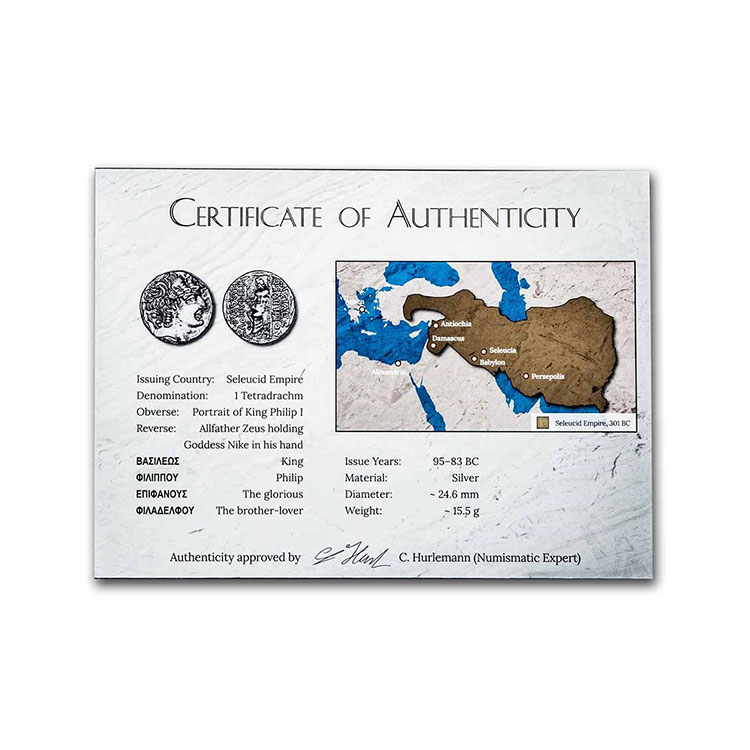

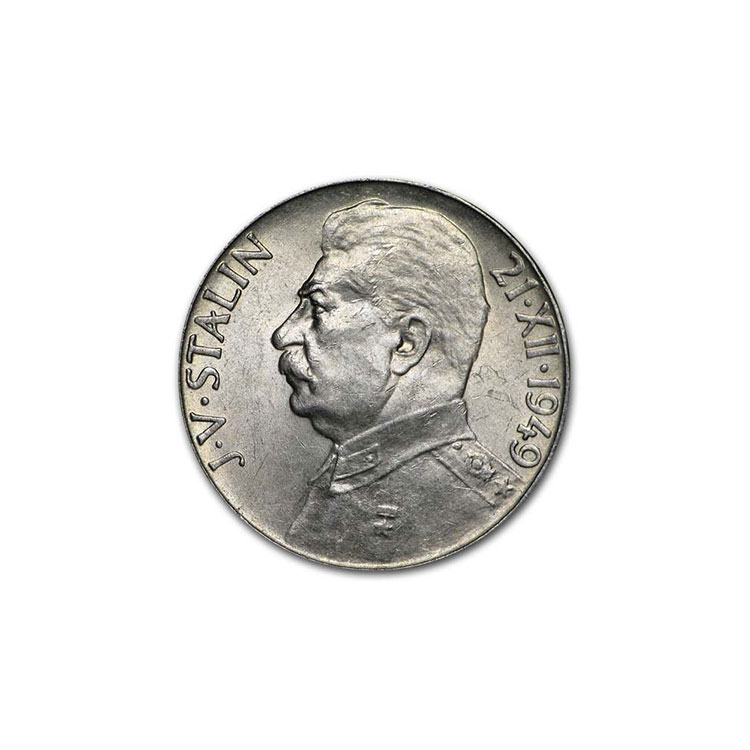



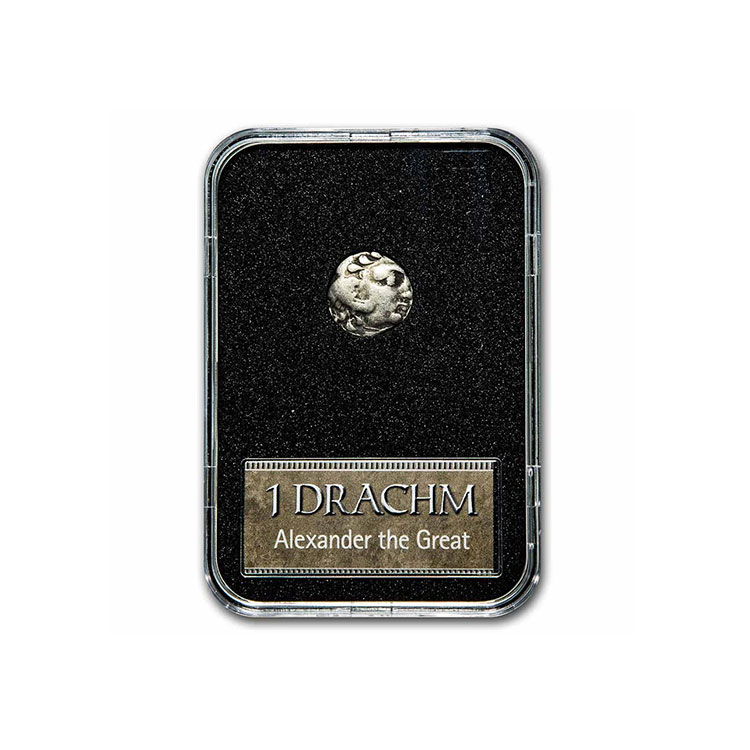


Reviews
There are no reviews yet.